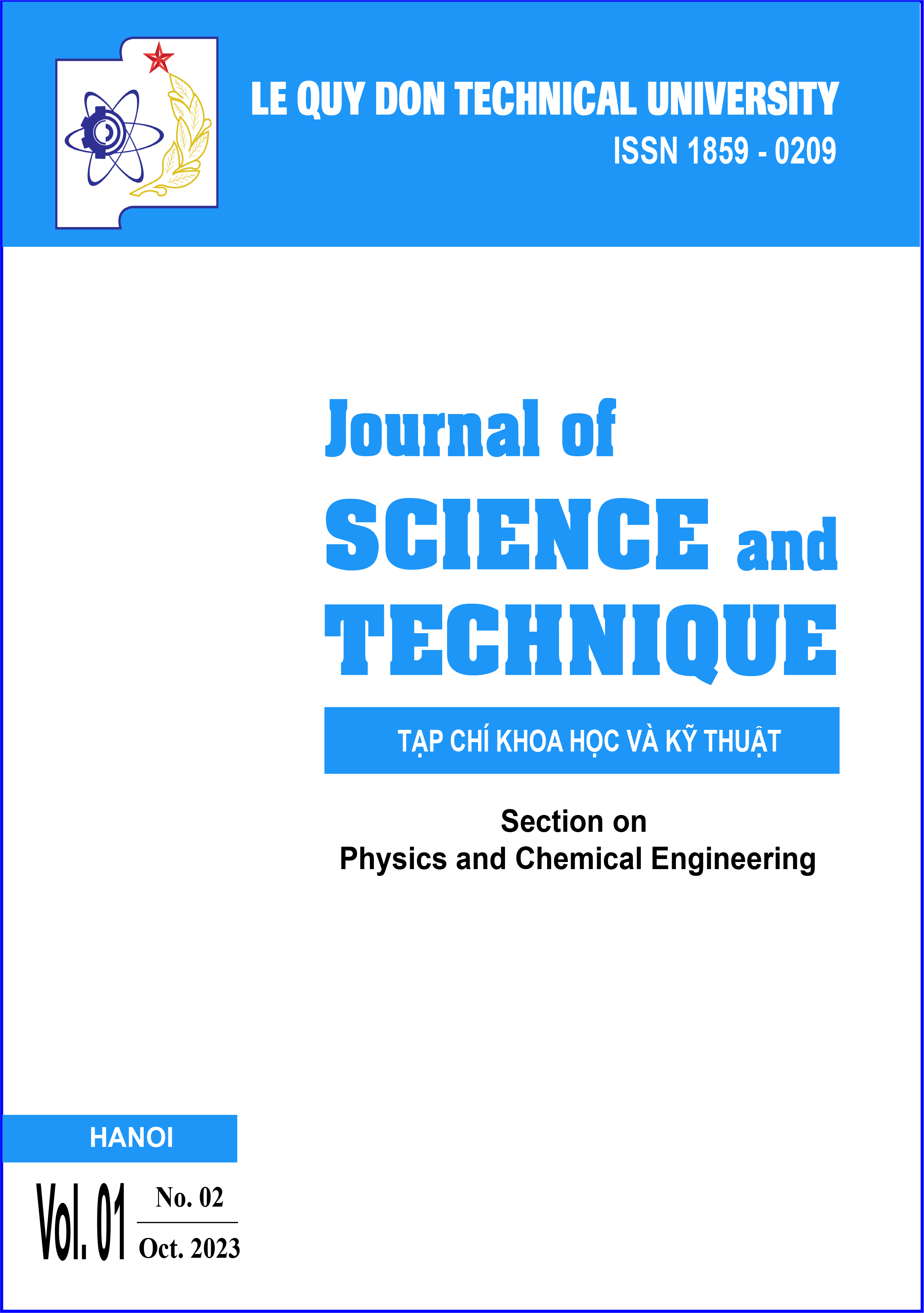SYNTHESIS OF Fe3O4 NANOPARTICLES GROWN ON RICE HUSK WASTE-DERIVED POROUS CARBON FOR HIGH-EFFICIENCY MICROWAVE ABSORPTION
Abstract
In this study, a straightforward process was employed to synthesize Fe3O4 nanoparticles-decorated porous carbon derived from rice husk waste (Fe3O4/C). The composite material was made by using pyrolysis and then coprecipitation. Fe3O4 nanoparticles were dispersed evenly across the surface of a porous carbon structure made from rice husks (PC) in three dimensions (3D). The highly graphitized porous carbon framework makes the tracks for electromagnetic waves that propagate longer and increases the loss of conductivity. With its unique structure and the effects of great attenuation and good impedance matching, Fe3O4/C is much better at absorbing microwaves than pure porous carbon. Most samples have a minimum reflection loss (RL) of less than -10 dB (90% reduction) over a wide range of electromagnetic frequencies (3.6 - 18.0 GHz) when the thickness of the absorber varies from 1.5 - 4.0 mm. With a thickness of 3.0 mm, the best RL is -70.8 dB, and with a thin thickness of 1.5 mm, the effective absorption bandwidth (EAB) is 14.4 GHz. According to the findings of this study, the use of Fe3O4/C material for electromagnetic wave absorption applications holds great promise due to the low cost and extensive benefits of the preparation process, as well as its excellent electromagnetic absorption performance.

